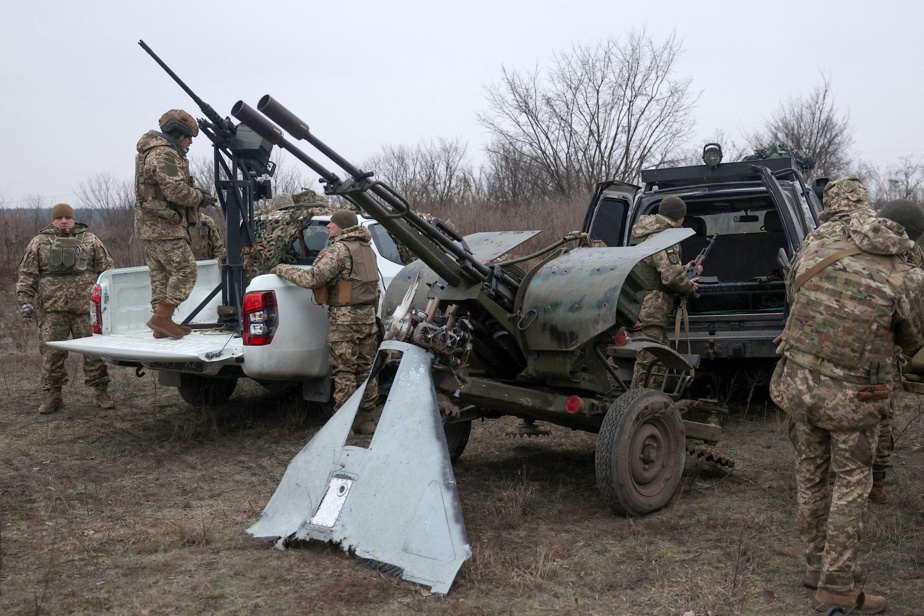(Near Kyiv) The Ukrainian mobile anti-aircraft defense has enough ammunition to face “a few” new large-scale Russian strikes, but its stocks can only be replenished with Western help, warns a Ukrainian general.
If the Ukrainian army currently says it has managed to shoot down most of the missiles and drones launched by Russia, these attacks have increased in recent days and continue to cause numerous victims: around fifty deaths in Friday’s attack, including 30 in Kyiv, five in that of Tuesday and hundreds of civilians injured.
“In the current situation, with regard to mobile air defense systems, munitions […] are sufficient to resist the next powerful attacks,” underlines General Serguiï Naïev, the commander of the Ukrainian joint forces, questioned on Wednesday by AFP during a meeting with other soldiers near Kyiv.
“But in the medium and long term, we of course need help from Western countries to replenish the stock of missiles,” adds the man who is in charge of these units responsible in particular for defending the skies of the capital.
For him, the priority is therefore to “obtain more ammunition” in the face of a Russian army which “really wants to exhaust the anti-aircraft defense system”.
According to President Volodymyr Zelensky, Russia has sent nearly 300 missiles and more than 200 Shahed explosive drones against Ukraine since December 29, 2023.
General Naïev’s units are equipped with mobile systems and not more advanced equipment like the American Patriots, capable of shooting down Russian Kinjal hypersonic missiles. “Of course, we would like more missiles for the Patriot and systems themselves,” continues this high-ranking Ukrainian officer.
The last two waves of massive Russian strikes were an opportunity for Ukrainian officials to urge the West to step up their aid, after almost two years of Russian invasion.
Decoy rockets
General Naev presented medals to the soldiers protecting the skies, praising an “effectiveness rate of around 90%” during the Russian air attack on Tuesday.
“No other air defense system in the world is capable of showing such results, especially when it comes to fighting Russia,” he believes.
Residents of a building gutted by the latest Russian strikes in Kyiv, however, expressed their anger to AFP on Tuesday after the Ukrainian defense failed to save their homes.
General Naev promises, for his part, that “improving the effectiveness of the anti-aircraft defense system is our task and we are working on it 24 hours a day, seven days a week”.
“Every Ukrainian citizen must be convinced that the military authorities are doing everything in their power to ensure their peace,” he said.
Roman, a soldier who uses a US Stinger man-portable missile launcher, recounts how he and his team shot down two cruise missiles on Tuesday, with the help of a ZU-23 anti-aircraft gun.
“We now work more often” and Tuesday was “difficult,” he admits, especially since his family is still in the Ukrainian capital.
“My wife and child are sleeping at home in Kyiv. I understand […] that I have to work,” he said.
On Tuesday, he first shot down a first missile with his Stinger, then, “six minutes later, the second missile passed above us”. “The guys from our unit worked with the ZU-23 on the second missile, also with precision,” assures this soldier.
But Russia, he said, has started resorting to new tactics recently.
“The Russians are now firing missiles that release decoy rockets in flight, like those from planes or helicopters. This has never happened before…and it’s a problem for the Stingers” and their infrared aiming system, Roman says.
These decoys are much hotter than the missile’s exhaust gases and can thus fool these defense systems.
“About a month ago we heard about it for the first time and now we have seen it with our own eyes,” the soldier continues.
Fortunately for his unit, during Tuesday’s attack, the decoys didn’t work, he said.
